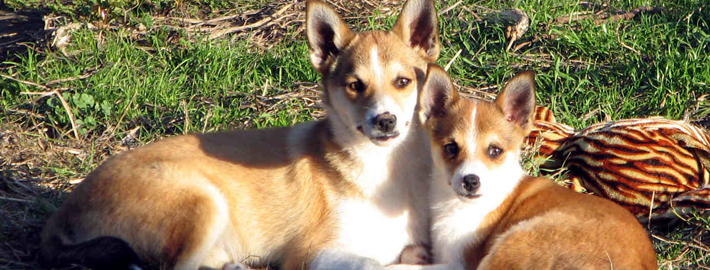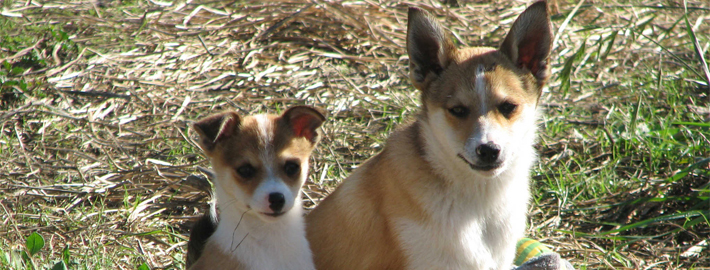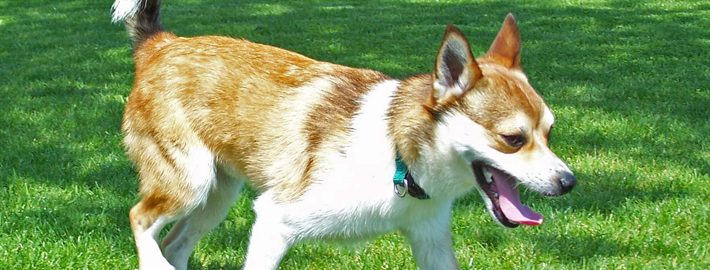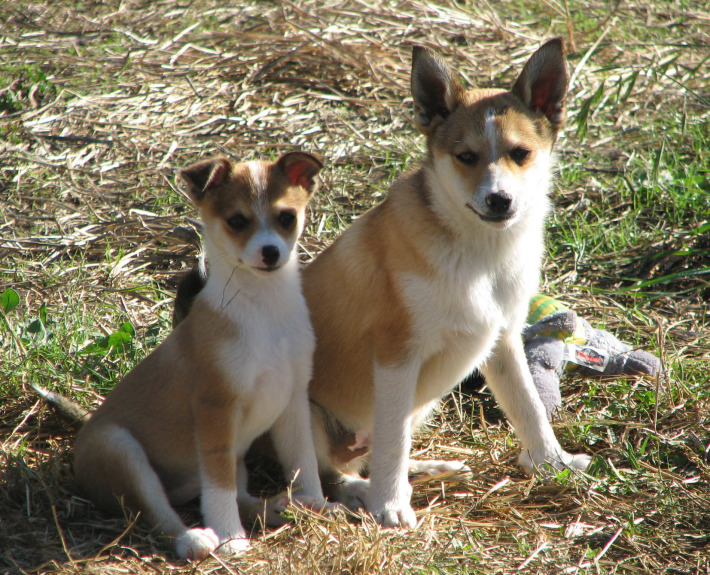What makes the Norwegian Lundehund Unique?
The Lundehund originated on the remote islands of arctic Norway, where it was used to wrestle and retrieve live Puffin birds (a meat and feather crop for the Norwegian farmer) from the crevices of steep vertical cliffs. The breed has also been described in writings as far back as the 1500s. When the Puffin bird became a protected species in the 1800’s, the dogs were no longer useful to the farmers and breed numbers dwindled. The breed was saved from near extinction after World War II through the friendship of two concerned Norwegians, but even today the numbers are limited
Breed Groups
Page Contents
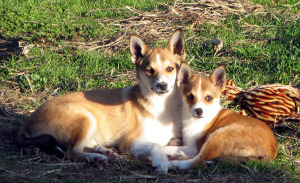
Is the Norwegian Lundehund Right For You?
Today, the Lundehund is a loyal and playful companion. Their superior personality, even disposition and small size make them an ideal, easy-to-live-with pet, although they may be wary of strangers. The breed’s coat requires minimal upkeep.
If you are considering purchasing a Norwegian Lundehund here.
- Non-Sporting Group; AKC recognized in 2011.
- Ranging in size from 12 to 15 inches tall at the shoulder.
- Puffin retriever.
In 5 Words
- Alert
- Protective
- Loyal
- Energetic
- Aggressive
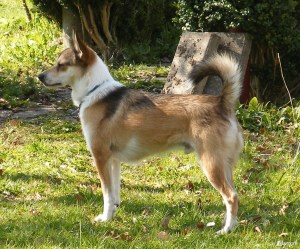
Characteristics
Learn About the Norwegian Lundehund
Description
General Description
The Norwegian Lundehund is a rectangular spitz dog, small, comparatively light with distinct secondary sex characters. The Norwegian Lundehund possesses some odd characteristics which other breeds do not. It has six toes on each foot, including two dewclaws. It has joints in the nape of the neck, which other dogs do not have. It has extremely flexible shoulder joints. The medium-sized erect ears have more mobility than the average dog. The eyes are brown and fairly deep-set. The head is small and wedge shaped. It has moderately muscled hindquarters suitable for agility rather than speed. The legs are strong. The tail is carried ring-shaped, or slightly rolled over the top line, or hanging. It has a short, rough, stand-off coat. Its dense topcoat lies flat against the body. The coat can be reddish-brown to fallow with more or less black hair tips, or black, or grey, all with white markings, or white with dark markings. The full-grown dog usually has more distinct black in the outer coat than the young dog.
Short History of the Norwegian Lundehund
The breed has a long history. As far back as 1600 it was used for hunting puffins along the Norwegian coast. Its flexibility and extra toes were ideal for hunting the birds in their inaccessible nesting locations on cliffs and in caves. Interest for the breed declined when new methods for hunting puffins were invented and a dog tax was created. Around 1900, they were only found in the isolated village of Mostad (spelled Måstad in Norwegian), Lofoten. The breed was nearly extinct around World War II when canine distemper struck Værøy and the surrounding islands. In 1963, the population was further decimated by another outbreak of distemper. This time, only six dogs survived, one on Værøy and five in southern Norway, Hamar. The latter five were from the same mother. This created a population bottleneck. Due to careful breeding with strict guidelines, there are now an estimated 1,500–2,000 dogs in the world, with around 1,100 of the population in Norway and ~350 in the United States.
Temperament
Lundehunds are cheerful, alert, inquisitive, watchful and sometimes stubborn little dogs that make wonderful companions when placed into the right homes. Long-time Lundie owners treasure the breed’s intelligence and playfulness. These are free-thinking dogs that can be quite independent. Some Lundehunds are wary of strangers, although they are not known to be aggressive even when challenged. Generally, they are fun and easy to live with. Lundehunds get along quite well with children and other animals, especially when they are well-socialized from puppyhood.
Early and extensive socialization is important for this breed. Lundehund puppies should be exposed to loud noises, unfamiliar people, animals of all ages and types, unusual environments, cars, motorcycles, new and potentially scary situations and as many other stimuli as possible starting at a young age. Lundehunds that are not well-socialized tend to become shy, hypersensitive to sounds and easily stressed by unfamiliar situations. It can be difficult to undo these traits once they become ingrained.
Caring for Your Norwegian Lundehund
General Health
The Norwegian Lundehund is prone to an intestinal syndrome called Lundehund Intestinal Syndrome. This syndrome is a mix of lymphangiectasia, inflammatory bowel disease, and small intestinal bacterial overgrowth. The result is an inability to absorb nutrients and protein from food. There is no cure for this disease, but it can be effectively managed.
Grooming & Bathing
The Norwegian Lundehund is known to shed a great deal, requiring daily coat brushing with a firm bristle-brush. It can also tend to be a shy breed, so the dog should be socialized at a young age. The Norwegian Lundehund enjoys just about any outdoor activity and is very energetic. A large yard is best for this dog breed; however the intelligent Lundehund is good at escaping, so a secure fence is suggested..
Exercise & Training
The Norwegian Lundehund needs to be exercised every day with a long daily walk or jog. In addition, it will greatly enjoy sessions of play. Training Lundehunds can be challenging. These are smart animals that usually understand what their owners want them to do. However, they often choose to do something entirely different. It takes a great deal of patience, an arsenal of tasty treats and a good sense of humor to work with this breed. Lundehunds do not respond well to rough treatment, loud commands, harsh corrections or unrealistic demands. Their training should emphasize consistent, kind but firm positive reinforcement rather than punishment.

